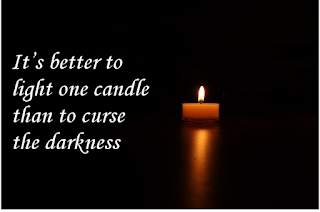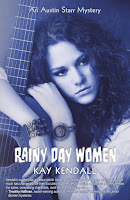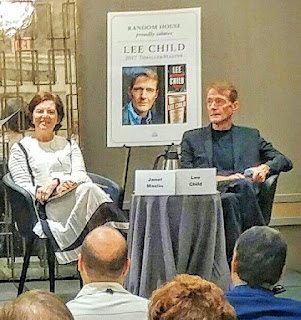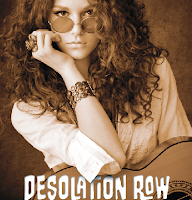My Mysteries’ Deepest Theme—Female Friendship
by Kay Kendall
I’ve read, authors typically have an underlying theme that they grapple with.
In the first book or two, the theme may not be obvious. In fact, the author
herself may not be conscious of it. Over the course of more books, however, a consistent thread shows up.
only recently discovered my own deep theme. And it is not what I had thought it
might be. Here it is—put most simply:
The importance of friendship
with—and support from—other women is key to a woman’s well-being. Or, to
paraphrase words the inimitable Ringo Starr sang way back in 1967, “She gets by
with a little help from her friends.”
first mystery came out in 2013 and my second two years later. Now my third is
nearing completion. I had thought I knew the themes in my murder mysteries, but
now realize I was wrong. After three outings, I see something else is at work.
Oh sure, the substance of my stories hasn’t changed, but another theme unwittingly crept into all three manuscripts. Close and sustaining friendships
among women appear in each book, and none of these had been part of my plan. A
quick tour through my books will show you what I mean. (No spoilers here.)
bride named Austin Starr follows her husband to a foreign country only to find
herself alone and in peril when he is jailed for murder. Certain of his
innocence, alone with no friends or relatives close by, Austin cannot even call
home to talk to relatives for support. The time is 1968, and long distance
calls are exorbitant. Then, in the nick of time, another young woman—Larissa,
the daughter of Austin’s professor—befriends her, and together they hunt down
the real murderer.
begins one year later. Austin is a new mother, and Larissa travels across the
country to take a summer job. One day Larissa phones Austin in the middle of
the afternoon. This shocking act tells Austin immediately that her friend is in
big trouble. As luck would have it, Larissa herself now stands accused of
murdering a coworker at her temporary workplace. Because their ties are now
strong, Austin with infant in tow flies across the country to support her dear
friend—with Larissa’s dad footing the bill.
older women who provide sage advice and comfort to Austin. In DESOLATION ROW a
middle-aged church secretary takes Austin under her wing and is so kind that
her sympathy brings tears to Austin’s eyes. In RAINY DAY WOMEN Larissa’s aunt
is so dauntless and dogged in her pursuit of justice for her niece that she
threatens to run away with the plot.
too—both good ones and evil—but what became clear to me as I began writing my third
mystery is how the females keep insinuating themselves into my stories. In my prequel
about Austin’s grandmother set in small town Texas during the Roaring Twenties,
there’s another strong-minded aunt—and even flappers and floozies who make a
surprisingly good impression on my heroine. My female protagonists in all three
mysteries are in their early twenties, still figuring out what they want to do
with their lives and who they want to be. Because of that shared
characteristic, I had thought my
overarching theme was how women find their way in life. But over and over
again, I find myself writing about how my protagonists are steadied and
supported and protected by other women. While some of these female friends are
the same age, others are older and somewhat world weary. The older ones share
what they have experienced in their longer lives.
characters are the ones who make my heroines’ stories possible. They ensure the
heroines’ success—whether it is finding the bad people and serving justice, or
living a fuller, more fulfilling life. Getting by with a little
help from female friends is the theme to watch for in my mysteries. Try as I
might to do something a bit different, this pattern continues. It seems I just
can’t help myself. Or, blame it on my subconscious, I guess. And, gosh, I hope
I haven’t spoiled any surprises by giving too much away.

Kay Kendall is a long-time fan of historical
novels and now writes atmospheric mysteries that capture the spirit and
turbulence of the sixties. A reformed PR executive who won international awards
for her projects, Kay lives in Texas with her Canadian husband, three house
rabbits, and spaniel Wills. Terribly allergic to her bunnies, she loves them
anyway! Her book titles show she’s a Bob Dylan buff too. Rainy Day Women won two Silver Falchion Awards at
Killer Nashville in 2015. Visit Kay at her website < http://www.austinstarr.com/>or on
Facebook < https://www.facebook.com/KayKendallAuthor>.






















